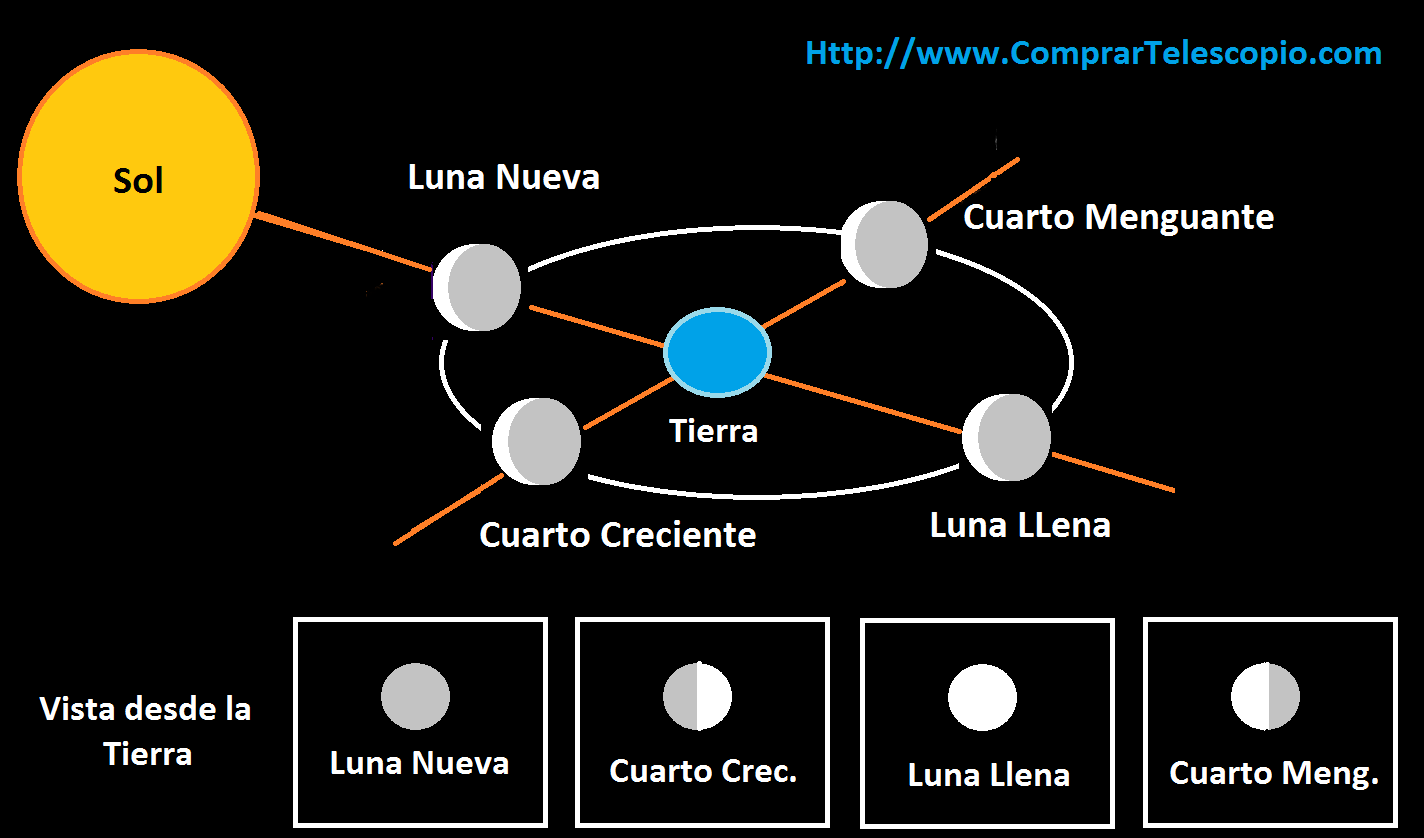Decoding the Lunar Cycle: What are the Moon's Phases?
Ever glanced up at the night sky and wondered about the ever-shifting shape of the moon? That transformation, from a sliver of light to a brilliant disc and back again, is what we call the lunar cycle, or the phases of the moon (cuales son la fases de la luna in Spanish). This celestial dance has captivated humans for millennia, influencing our myths, calendars, and even our understanding of the cosmos.
The moon, Earth's only natural satellite, doesn't produce its own light. What we see is reflected sunlight, and the amount we see depends on the moon's position relative to the Earth and the sun. This intricate interplay creates the lunar phases, a predictable cycle that unfolds over approximately 29.5 days, a period known as a synodic month.
Understanding the different stages of the moon's journey—from the new moon's invisibility to the full moon's radiant glow—connects us to a larger cosmic rhythm. It's a reminder of the constant change and interplay of forces in the universe. But the phases of the moon are more than just a beautiful spectacle. They have played a significant role in human history, shaping our understanding of time, navigation, and the natural world.
Early civilizations meticulously tracked the lunar cycle, using it as the basis for their calendars. The moon's predictable phases offered a tangible way to measure the passage of time, crucial for agricultural practices and religious observances. Even today, many cultures around the world celebrate festivals and events tied to specific lunar phases, reflecting the enduring influence of this celestial clock.
The moon's gravitational pull also affects Earth's tides, creating the rhythmic ebb and flow of our oceans. This tidal influence has had a profound impact on coastal ecosystems and maritime activities. From the spawning cycles of marine life to the navigation of ancient seafarers, the phases of the moon have played a pivotal role in shaping our relationship with the sea.
The cycle begins with the new moon (luna nueva), a time when the moon is positioned between the Earth and the sun. Since the sunlit side of the moon faces away from us, it's invisible or appears as a very thin crescent. As the moon continues its orbit, the illuminated portion grows, leading to the waxing crescent moon. This is followed by the first quarter moon, half illuminated, and then the waxing gibbous moon, where more than half is visible. The cycle culminates with the full moon (luna llena), a breathtaking spectacle when the entire face of the moon is illuminated by the sun. The cycle then reverses, with the moon waning through the waning gibbous, third quarter, and waning crescent phases until it returns to the new moon, beginning the cycle anew.
One common misconception is that the lunar phases are caused by Earth's shadow falling on the moon. While Earth's shadow does cause lunar eclipses, it's the changing angle of sunlight that creates the regular phases we observe.
Observing the lunar cycle is a simple yet rewarding activity. Find a spot with a clear view of the night sky and track the moon's appearance over several nights. You can even photograph the different phases to create your own lunar calendar.
Advantages and Disadvantages of Tracking Lunar Phases
| Advantages | Disadvantages |
|---|---|
| Connection with nature | Requires clear night sky |
| Better understanding of celestial mechanics | Observations can be weather dependent |
Frequently Asked Questions:
What causes the moon phases? The moon's orbit around Earth and the changing angle of sunlight.
How long is a lunar cycle? Approximately 29.5 days.
What is a new moon? The phase when the moon is between the Earth and the sun, appearing invisible or as a thin crescent.
What is a full moon? The phase when the entire face of the moon is illuminated by the sun.
Do the moon phases affect human behavior? There is no scientific evidence to support this claim.
How do tides relate to the moon? The moon's gravitational pull creates the tides.
Can I track the moon phases myself? Yes, by observing the moon over several nights.
Where can I learn more about the moon? Numerous websites, books, and apps are dedicated to lunar exploration.
In conclusion, the phases of the moon (cuales son la fases de la luna) are a captivating celestial phenomenon that has influenced humanity for centuries. From marking time to inspiring myths and shaping our understanding of the cosmos, the lunar cycle offers a profound connection to the natural world. By understanding the science behind these phases and taking the time to observe them, we gain a deeper appreciation for the intricate dance of celestial bodies and our place within the universe. So, next time you see the moon shining in the night sky, take a moment to appreciate the cosmic ballet unfolding above you. Explore the resources available online and in libraries to further your understanding of this fascinating cycle and its impact on our world. Embrace the wonder of the moon and its ever-changing face, a timeless reminder of the dynamic nature of the universe.
Conquer the salt your guide to minn kota 12v saltwater trolling motors
The gripping performances in the closer season 4 episode 5 a look at the cast
Epic fantasy boy names your quest for the perfect name ends here














